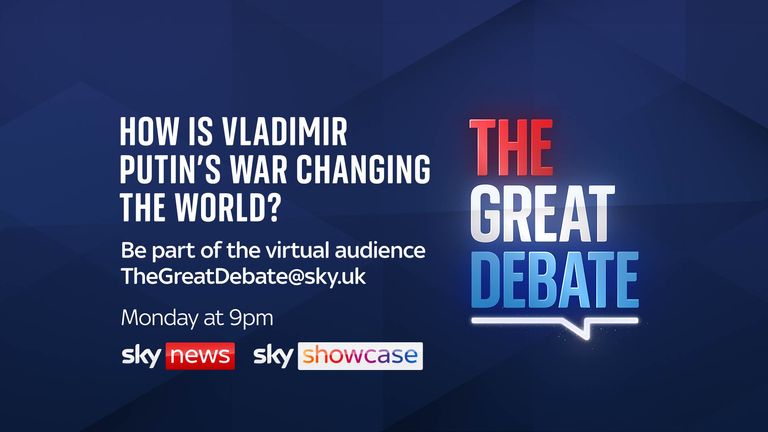£2,553 out of pocket: How the war in Ukraine is worsening the UK’s cost of living crisis
Sanctions on Russia are already starting to worsen an acute cost of living crisis in the UK.
Despite limited dependence on Russian imports, surging global prices are expected to erode living standards even further.
The average UK household will experience a £2,553 drop in income this year, half of which is as a result of the invasion of Ukraine, according to the Centre for Economics and Business Research (CEBR).
There is also expected to be a considerable jump in the prices we pay at the supermarket and petrol pump.
The CEBR predicts that inflation will now peak at 8.7% next quarter and then stay twice as high as expected until the second half of 2023. This means a shopping basket that cost £20 a year ago will cost almost £22 in the next few months.
The Bank of England raised interest rates again in March to try and moderate rising prices.
But Douglas McWilliams, CEBR deputy chairman, says that it is “hard to see how the poor British consumer can escape unscathed”.
“The squeeze is unprecedented except in wartime,” he says. “We are all going to suffer, but it will hit poorer people more than the average person as they spend proportionately more on heating and food.”
If gas and electricity prices stay at the current levels, the Resolution Foundation predicts that the energy price cap next winter will be almost £1,000 higher than the elevated level set to be introduced in April (£1,971).
Which sectors will be most affected?
At first glance, it appears that the UK will easily be able to weather the economic fallout from the war as neither Russia nor Ukraine are big trading partners. In 2021, we exported more than six-times as much to the US as we did to Russia.
But despite limited overall trade, some parts of the UK economy are quite reliant on Russia. Almost 20% of the UK’s vegetable product imports come from there, according to UN Comtrade data.
Certain European markets are even more exposed. The EU imports more than a third of its nickel from Russia, 28% of fertilisers and 27% of its mineral fuels.
Even sectors without direct trade links will be hit by supply chain disruption and rising prices if they depend heavily on Russian and Ukrainian production of inputs.
Olly Bartrum, a senior economist at the Institute for Government (IfG), says that disruption to global metal markets will affect many key UK sectors like automotive, smartphones and aerospace.
“Russia produces 40% of the world’s palladium, a key ingredient in the automotive sector as it goes into catalytic converters in cars,” he says.
But he adds that this disruption is “nothing” compared to the ripple effect from rising energy prices.
Increased uncertainty is slowing the UK’s economic recovery
The latest data for January 2022 shows that the UK economy is now stronger than it was before the pandemic. But the war in Ukraine has blighted the outlook for growth.
In response to the invasion, the geopolitical risk index developed by the US Federal Reserve spiked to the highest level since the start of the Iraq war in 2003.
IfG’s Mr Bartrum says that this uncertainty is likely to slow recovery from the pandemic.
“Geopolitical risk of previous conflicts – 9/11 being a very salient example – has had a negative economic effect,” he says. “We would expect the same this time, as consumers and firms become more cautious.”
Uncertainty is also preventing UK companies from taking advantage of the gap in the market left by Russian and Ukrainian exports.
Gemma Tetlow, chief economist at IfG, says that there are potential opportunities for UK producers in markets like barley, wheat and gas.
“But the extent to which that is possible is impacted by uncertainty because it requires significant long-term investment and that won’t be worth doing if this is purely a temporary blip,” she says.
The Data and Forensics team is a multi-skilled unit dedicated to providing transparent journalism from Sky News. We gather, analyse and visualise data to tell data-driven stories. We combine traditional reporting skills with advanced analysis of satellite images, social media and other open source information. Through multimedia storytelling we aim to better explain the world while also showing how our journalism is done.
